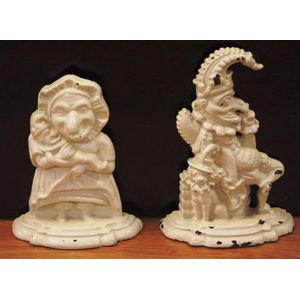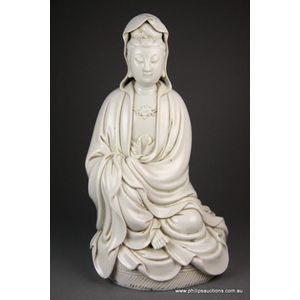Art Nouveau Spelter Busts: Cleopatre and Salambo
You must be a subscriber, and be logged in to view price and dealer details.
Subscribe Now to view actual auction price for this item
When you subscribe, you have the option of setting the currency in which to display prices to $Au, $US, $NZ or Stg.
- Art Nouveau Period - The Art Nouveau period was a cultural movement that emerged in the late 19th century, and was characterized by its emphasis on natural forms, flowing lines, and a decorative, ornamental style. Art Nouveau was a reaction against the ornate and heavily stylized designs of the previous era, and sought to create a new, more organic aesthetic.
Art Nouveau was characterized by its use of sinuous, curving lines, as well as a focus on natural elements such as flowers, vines, and other organic shapes. Art Nouveau designers sought to create a total work of art, in which every element of a building or object was designed to be harmonious with the overall design.
Some of the most iconic examples of Art Nouveau design include the Paris Metro entrances designed by Hector Guimard, the works of the artist Alphonse Mucha, and the architecture of Victor Horta in Brussels.
The Art Nouveau period was at its peak between 1890 and 1910, but began to decline in popularity by the start of World War I. However, Art Nouveau remains an important influence on design and art to this day, and continues to be celebrated for its emphasis on natural forms and decorative style. - Spelter - Spelter was the name given to an alloy of zinc and brass or copper used in the 19th century for statuary and lighting. It is a brittle bluish-white metal. It was used as a cheap replacement for bronze, but being brittle easily breaks and can't be repaired. When finished it can often be mistaken for bronze, but if discreet a scratch on the base displays shows a greyish colour, the metal is spelter, if a golden colour the metal is most likely bronze.
This item has been included into following indexes:
Visually similar items

Two vintage Punch and Judy cast iron door stops, height 31 cm approx (tallest)

A Chinese Blanc-de-Chine Guanyin, a classically robed and contemplative Guanyin in lalitasana pose or 'Royal ease' holding an elixir bottle in her left hand, and seated upon a double lotus throne above wave like forms; with impressed seal and character mar

A Chinese porcelain Guanyin, seated in lalitasana or the Royal ease pose, the white porcelain Guanyin with down-cast eyes and pendulous lobes and wearing a lotus necklace, her body and coiffed hair enveloped in drapery and the whole raised upon an oval bas

A Chinese dehua white-glaze figure group, of Guanyin and two child-attendant, 15.3 cm high
